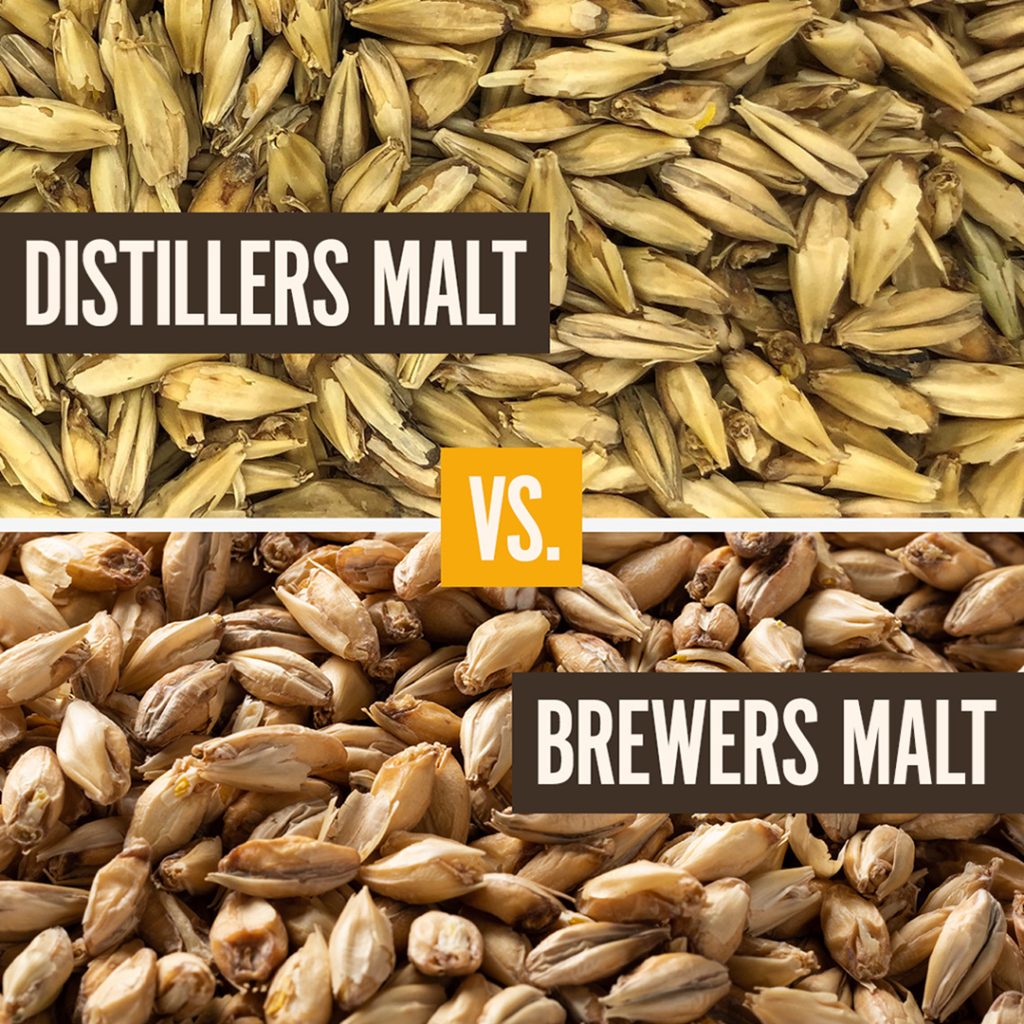
One of the more common questions I receive from craft distillers is – what are the differences between your “Distillers” malt and your “Brewers” malt? I typically respond with another question – what kind of whiskey do you want to produce, or what does your grain bill consist of? This cuts right to the chase and gets into which product will best serve that distiller’s need. There are many differences, which begin with barley sourcing and continue into the malthouse with different processing parameters to meet quite different specifications. Examining these differences in greater detail will give you a better idea of which product is best used for your spirit, and why.

Let’s first look at some of the key analytical differences between these malts. Below is a chart that shows some of the most critical parameters and compares general specifications.
General Specifications
| Moisture | Protein | Extract FG db | DP | AA | |
|---|---|---|---|---|---|
| Brewers Malt | max 4.5 | max 12.5% | 80% | 110 – 130 | 40 – 60 |
| Distillers Malt | max 6.5 | min 13.0% | 77% | min 240 | min 90 |
Primary Differences
The most glaring difference is enzyme level. Both Diastatic Power and Alpha-Amylase levels are significantly higher in distillers malt than in brewers. We also see distiller’s malt requires higher protein barley, which results in a lower extract since those two parameters are inversely proportional to each other.
To understand why we need to start discussing the application. Here in the U.S., our distiller’s malt has been designed to convert grain bills comprised primarily of corn. Barley malt is the only source of enzyme and is used at low percentages (8-12%), requiring maltsters to produce a very high enzymatic malt. To help achieve this, they have learned to use higher protein barley. This improves the potential to reach higher levels of enzymes since enzymes are proteins. The maltster will also “modify”/grow the barley as much as they can during the germination step of the process. The higher degree of modification, the more enzymes are produced. Once produced they will try to preserve as much as possible during the final kilning step by using lower heats with increased airflow, limiting denaturing.
Distillers vs. Brewers
The American Whiskey Distiller will sacrifice having slightly higher moisture, lower extract malt to assure that the enzyme levels are adequate to convert all the extract coming from the much higher percentage of raw grains. It’s all about the enzyme for these distillers. The better conversion, the more sugar and thus alcohol is produced during fermentation, ultimately resulting in more proof gallons per bushel coming off your still.

A brewer, on the other hand, expects more from his malt. It not only provides the enzyme package, but also the source of extract. It provides much of the flavor and all of the colors in a beer. For many brewers, it also provides the ever so important filtration media (the husk) for their lautering operations. Malthouse germination temperature is more tightly controlled to produce just enough enzyme while not consuming too much of the starchy endosperm. Higher temperatures are then used in kilning and/or roasting to develop flavor compounds through the Maillard reaction.
Styles
The craft distiller, wanting to produce an “all” malt whiskey style, like Scotch or Irish, shares many of the needs of the brewer. Their malt is also the sole source of extract and provides the entire enzyme package for conversion of that extract. While not providing color, flavor certainly is important for the “all” malt distiller, so a high-quality 2-row brewer’s malt is a great start for an “all” malt whiskey grain bill.

At the end of the day, you want to make sure you are using the right malt for the spirit you are producing. For the American whiskey or grain-based vodka distiller that can’t or won’t use synthetic enzymes in their process, an American Distillers malt used at a small percentage of total grain bill is the best natural solution. However, the “all” malt distiller, can now use Briess’ Odyssey Whiskey Malt, Pale Ale, or Pilsen malt as the backbone of their spirit.
Originally published February 29, 2016; updated February 4, 2022


